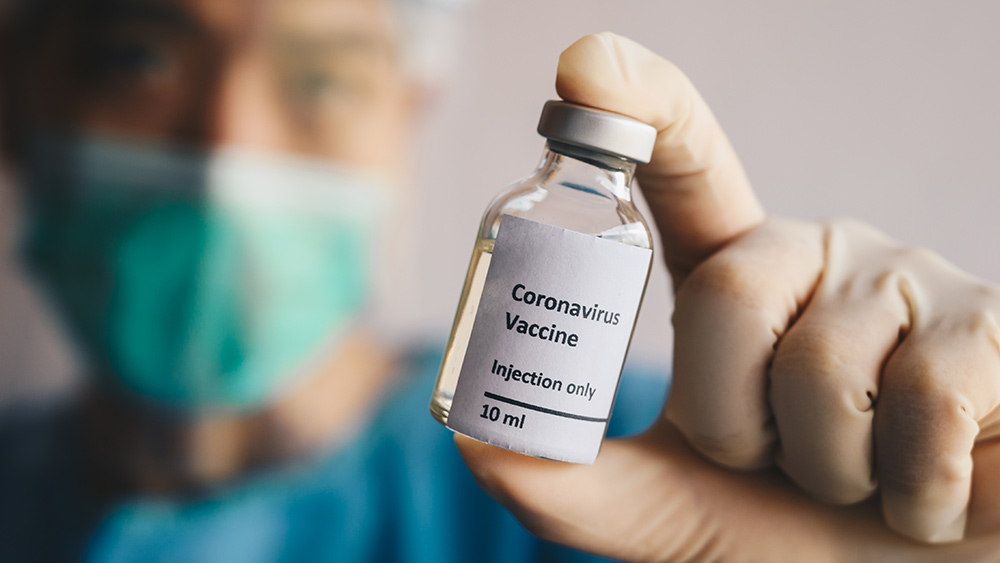American children are losing millions of IQ points thanks to exposure to toxic chemicals
03/08/2022 / By Cassie B.

Are young people getting dumber? It sounds like a harsh sentiment, but it’s one that crosses many people’s minds when we hear about some of the risky stunts young people pull to attract more “likes” on social media, like the Tide pod challenge. And while the internet might bring out the worst in a lot of attention-seekers – while also bringing these poor decisions to our attention more so than in the past – it turns out that young people really are losing IQ points thanks to the prevalence of toxic chemicals in our environment.
Research from New York University’s Grossman School of Medicine found that exposure to just a single type of toxic chemicals – flame retardants – has been enough to rob young people of a total of 162 million IQ points, in addition to causing 738,000 cases of intellectual disability.
Unfortunately, that’s not the only toxic chemical we are being increasingly exposed to, and others have caused just as much damage. For example, lead exposure has resulted in the loss of 78 million IQ points in American children, while pesticides and mercury have been linked to the loss of 27 million and 2.5 million IQ points, respectively. This is according to a study that was published in the journal Molecular and Cellular Endocrinology.
While it’s fair to say that all of us are being exposed to these toxins, young people are particularly susceptible to negative effects because their brains are still in early developmental stages.
NYU public health researcher Leo Trasande said: “Kids’ brain development is exquisitely vulnerable. If you disrupt, even with subtle effects, the way a child’s brain is wired, [it] can have permanent and lifelong consequences.”
Researchers believe that most of the children who have been negatively impacted by toxins were exposed in the womb through the types of objects found in many homes, setting the stage for a lifetime of problems before they even entered the world.
For example, flame retardants are found in all sorts of furniture items and electronics – and even more concerningly, in children’s clothing. Lead, meanwhile, is largely associated with older homes, but it is still used in commercial paint, including the type that is used to paint playground equipment.
Pesticides are everywhere, and one of the biggest sources is the fresh produce that so many pregnant women consume to enhance their health during pregnancy and feed to their growing children thanks to the nutritional value it provides.
What price are we paying for our toxic lifestyles?
The researchers report that a single IQ point is worth around 2 percent of an individual’s lifetime economic productivity. And while the loss of one or two IQ points might not be immediately noticeable at the individual level, the cumulative effects can be felt in the economy at large.
“If a child comes back from school with one less IQ point, maybe mum or the parent might not notice. But if 100,000 children come back with one less IQ point, the entire economy notices,” Trasande noted.
Put more simply, if a child’s ultimate lifetime productivity is $1 million, losing an IQ point is equal to $20,000.
The effects of this serious childhood brain damage are costing the economy trillions of dollars. According to Trasande’s estimates, lost IQ points from 2001 to 2016 from the aforementioned toxins represents a $6 trillion loss in the American economy, without factoring in the extra care or social services needed to help those who have experienced brain damage due to toxin exposure.
If there is any good news here, it’s the fact that the use of some these toxins has already been reduced thanks to the growing body of evidence demonstrating the damage that they cause. However, many of them persist in the environment despite having their use suspended, and pesticide use remains a serious problem.
Sources for this article include:
Submit a correction >>
Tagged Under:
brain damage, brain function, brain health, children's health, discoveries, environment, Flame retardants, IQ, Lead, products, research, toxic chemicals, toxins
This article may contain statements that reflect the opinion of the author
RECENT NEWS & ARTICLES
COPYRIGHT © 2017 TOXINS NEWS




















